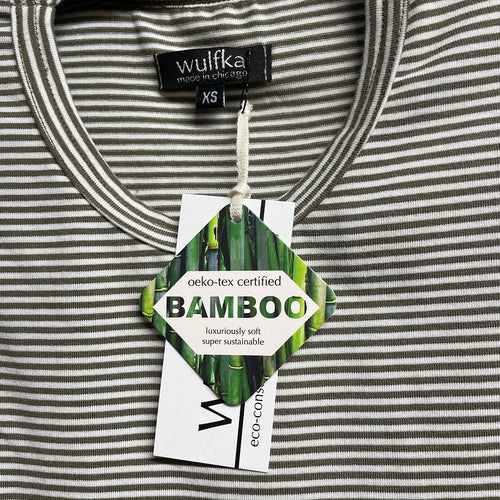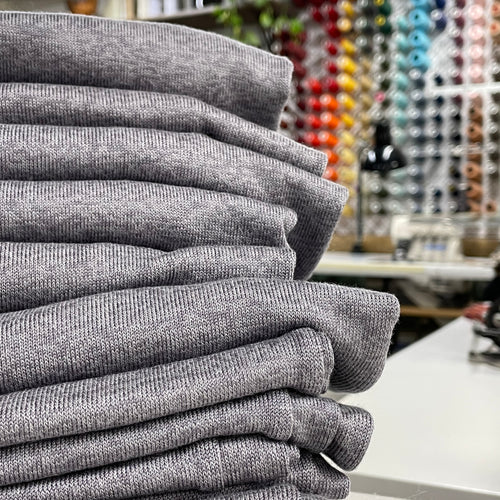The Dawn (and Backlash) of Synthetic Dyes

I was recently invited to speak to a class at UW Madison about the commercial viability of natural dyes. There is not a huge demand for clothing dyed with natural dyes, but I believe there will be. And I wanted to draw a parallel between our toxicity tolerance today vs. the late 1800s to make my case.
And since I already prepared this presentation, I'd like to share it with you too!
In 1856, a young William Perkin discovered the first synthetic dye by accident. He was experimenting in his father's home chemistry lab, attempting to discover a synthetic quinine for treating malaria (don't you long for a time when people had proper hobbies?) He wiped residue out of a beaker and realized he had produced a washproof and lightproof dye. It was mauve.
Empress Eugenie loved it. Soon mauve was absolutely everywhere.

There was a cascade of new synthetic dyes in the following decades. Vibrant, saturated colors became affordable for all. Women's magazines encouraged readers to learn color theory so that they could style their outfits. The waterway outside the Perkin & Son factory turned a different color every week.
A host of chemicals in the dyes caused skin allergies, kidney damage, skin burns, convulsions, birth defects, pregnancy loss, liver damage, bladder cancer, central nervous system damage... you get the idea.
A particularly egregious example is green pigment, which was extremely popular in home decor, clothing, and artificial flowers. There was a trend of wearing crowns and headpieces of artificial flowers (I am madly in love with this example from France about 1860. Look at the detail! Strawberries at various stages of ripeness, including strawberry flowers. Two kinds of grapes. The detail and vivaciousness are astounding!) But green contained massive amounts of arsenic!


Firsthand accounts of the working conditions in artificial flower factories report little girls with bandaged hands and cutaneous lesions, wearing handkerchiefs soaked with blood, working with green until their faces were masses of sores and they're nearly blind. A leafy headdress contained enough arsenic to poison twenty people.

Around 1880 there was a sudden backlash called "chromophobia." Bright saturated colors were considered tacky. Educated and wealthy folks bought "artisinal, vegetable-dyed stockings made by country peasants."
Germ theory became widely accepted around this time, and white garments that could be bleached and treated with scalding hot water became popular, especially in undergarments which came in most direct contact with the skin.

And now we are all feeling very smug that we're not these stupid primitive Victorians dousing ourselves with poisons, aren't we! Until I tell you that, quoting industrial hygienist Judith Anderson, "there are next to zero regulations for chemical content of clothes in the United States."
Tests often turn up endocrine disruptors, PFAs, formaldehyde, etc. Polyester clothes contain Azo disperse dyes which, when combined with our skin bacteria, may be carcinogenic, mutagenic, and genotoxic meaning that they could cause genetic changes and cancer. Polyester may also contain plastic additive BPA (you've heard of BPA-free plastic bottles? It could be in your workout clothes now) which is a hormone-disrupting chemical which may disrupt metabolism, growth and development, birth defects, and increased anxiety.
Reported symptoms are often vague. Brain fog, fatigue, asthma, fibromyalgia. It's difficult to pin a symptom to a garment when you only wear it once a week or once a month. But you know who wears a garment for many hours each week, often overnight? Our unfortunate canaries in the coal mine: flight attendants.

In 2011 several airlines issued new uniforms. They were crisp, easily-laundered polyester with wrinkle-free, stain-free, and flame-resistant finishes. Of each airline, 8-22% of flight attendants reported negative symptoms when they wore the uniform. These included headaches, rashes, and severe chronic respiratory issues. Some escalated to lesions that oozed blood, grotesquely swollen eyes, hair loss. Possibly organ failure and cancer, though a definitive causal relationship is difficult to prove.
I'll remind you that many of Wulfka fabrics are Oeko-Tex Certified, which is one of the most stringent testing standards in the industry. (Shameless plug for my own product, I know, but this is my blog after all!) I haven't used it in a while, but do you remember this handy little graphic?

These are the three life stages of fiber, as defined by me. I think most people can wrap their heads around the "Acquisition" stage, as in organic vs. conventional cotton, or polyester from recycled bottles, etc. I also think that folks can understand that at "End of LIfe" plant-based and animal-based fabrics decompose while synthetic (aka plastic) fibers clog landfills. (Want to know more about the basic types of fibers? Check out my Fabric Science Basics blog post!)
The "Processing" stage, however, is still invisible. I like to do small natural dye projects because I find it delightful, but also because it's a tangible, visible version of the Processing stage. It gives me a reference point to engage in these kinds of discussions. I also believe that there will be a backlash against highly-processed clothes and a strong demand for natural dyes while the industry scrambles for greater oversight and healthier dye processes, just like 150 years ago!

This information comes from "To Dye For" by Alden Wicker and "Fashion Victims: The Dangers of Dress Past and Present" by Alison Matthews David.
If you're interested in this topic, I also recommend "The Secret Lives of Colors" by Kassia St. Clair and "Mauve: How one man invented a color that changed the world" by Simon Garfield. If you're interested in playing with natural dyes yourself, please get "Wild Color: The Complete Guide to Making and Using Natural Dyes" by Jenny Dean!






